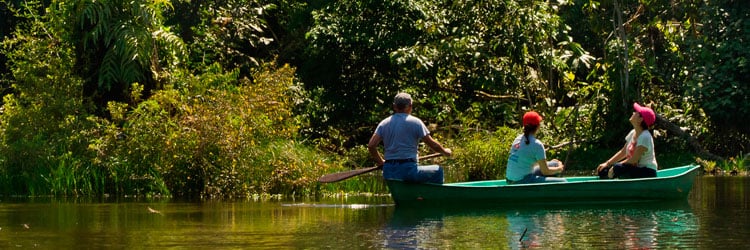Exploring Ecuador: Perspectives for Student Programs
Rich in both biodiversity and cultural diversity, Ecuador offers a variety of eye-opening learning opportunities for students and educators alike. Enhance your classroom curriculum with hands-on activities that instill meaningful lessons and facilitate connections between the travelers and Ecuador’s boundless natural wonder.
Why is Ecuador perfect for educational programs? This destination offers innovative and economical educational programs that make for a successful academic journey beyond the classroom walls. Itineraries, accommodations, land costs and flights are budget friendly, engaging, and safe. Through a myriad of learning opportunities, students can expand their knowledge in history, nature, culture, community and conservation while having fun and deepening their appreciation for world travel.
About the size of the state of Nevada, Ecuador is considerably small (284,000 square kilometers total) yet within its borders lie four distinct regions—the Amazon, the Andes, the Pacific Coast, and the Cloud Forests—paradises of varying qualities, geography, landscapes, flora and fauna. Study, learn, volunteer, and explore in an often-overlooked dream destination for students and educators. Here’s a glimpse of what each of these worlds has to offer.
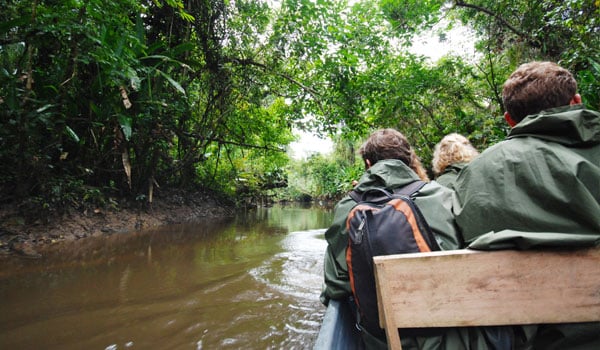
Research & Investigation in the Amazon
Ecuador is one of 17 countries worldwide that have been declared “megadiverse,” meaning it harbors a great deal of the Earth’s species. Furthermore, the country has the highest number of plants, invertebrates, amphibians, reptiles, fish and mammals per square kilometer, in large part due to the Amazon.
The Amazon Rainforest accounts for the largest portion of the country, and Yasuní National Park in Ecuador is the most biodiverse ecosystem on the planet! The park is home “150 species of amphibians, 121 species of reptiles, over 200 species of mammals, over 596 species of birds and 382 species of fish.” Needless to say, it’s a nature and science lover’s paradise. Visit the Amazoonico Center, and learn about the rescue and rehabilitation of injured wild animals.
If you’re looking for cultural exchange, there are nine indigenous nationalities that reside in the Ecuadorian Amazon, many of whom welcome tourists. Learn about traditional ways of life, and the use of medicinal plants, abundant in the rainforest. Adventurous side excursions include kayaking through rivers and lagoons, and hiking through unspoiled areas of primary forest amid the company of toucans, monkeys, and other wildlife that call the Amazon home.
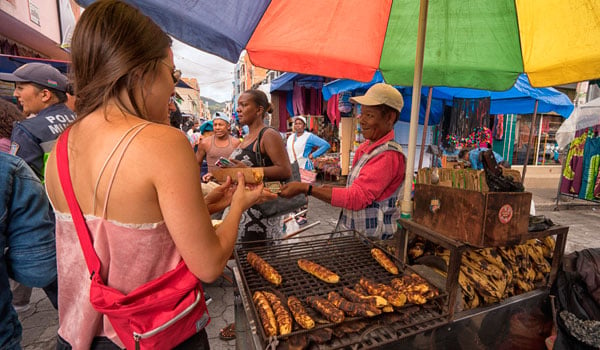
Culture & History in the Andes
Ecuador is crossed by The Andean Cordillera (Mountain Range), also known as the Sierra and the Highlands. The mountains stretch nearly the entire length of the country from north to south and give way to beautiful landscapes, impressive volcanoes, rivers and lakes. Along the mountain range there are 55 volcanoes just within Ecuador, as well as the highest active volcano in the world, Cotopaxi Volcano (5,911 meters).
Quito, Ecuador’s capital and a UNESCO World Heritage Site, is nestled in the foothills of the Andes, and combines small-town charm with modern-day advancement—the perfect starting point for an Ecuadorian adventure. Once the capital of the Northern Inca Empire, Quito’s Centro Histórico (historic center) is well-preserved; the cobblestone streets and colonial architecture provide a glimpse into the past. Travel north and you’ll find yourself in the town of Otavalo, home to indigenous communities, native crafts and the world-famous Otavalo Market.
South of Quito lies the lesser-known city of Cuenca, also a designated UNESCO World Heritage Site and “one of the three most important cities in Ecuador,” (Maria Fernanda Pareja, Latin Roots Travel Co.) due to its history and architecture, some of which dates back to the sixteenth and seventeenth centuries. Sometimes regarded as a smaller version of Quito, Cuenca has its own unique charm and boasts beautiful architecture, restaurants, old-time churches, museums, and impressive handmade ceramics. Overall, the highlands offer the perfect blend of nature and culture: hike through the mountains, and learn about the different indigenous tribes that carry on their own unique traditions.
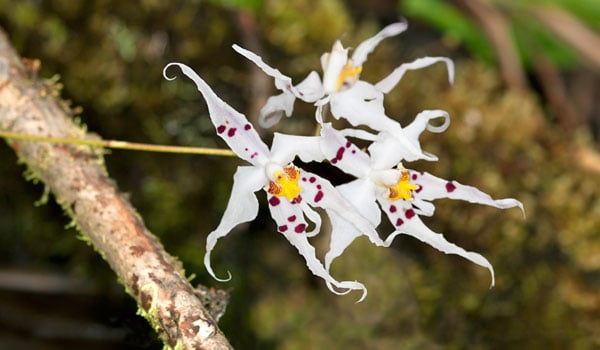
Biology & Natural History in the Cloud Forests
Cloud forests, technically called pre-montane/subtropical rainforests, span the Andean slopes from about 900 meters to about 2500 meters. The ecosystem is characterized by consistent low-level cloud cover, where the rain doesn’t fall from the sky in the typical sense, but simply drips from the clouds directly onto the vegetation of the forest.
Cloud forest are amass with shades of lush, mossy, greens and because of these qualities they are home to incredibly diverse flora and fauna, much of which has not yet been studied. Botanicals, such as orchids (there are 4,200 documented species in Ecuador!) and epiphytes thrive in the moist, cool, atmosphere. The Mindo Valley in Ecuador contains the Mindo Nambillo Cloud Forest Reserve, which provides refuge for over 350 species of birds, specifically hummingbirds, making it a prime location for birders to check off hard-to-find species.
The cloud forests also provide sanctuary for butterflies and an array of other insects. This region of Ecuador allows students to compare and contrast several distinct ecosystems including rainforest, cloud forest, and tropical dry forest.
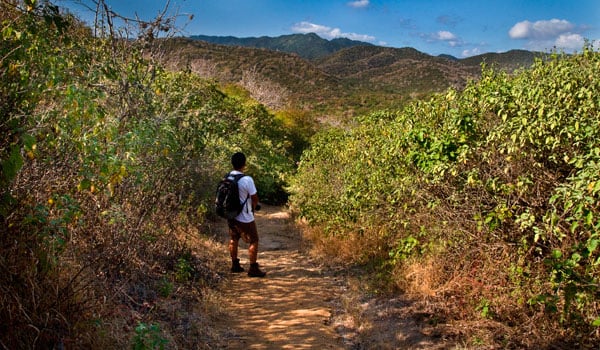
Conservation & Citizen Science along the Pacific Coast
Ecuador’s coastal region is as diverse as the rainforests and mountains and is home to Machalilla National Park (60,000 hectares). The park encompasses tropical dry forest (unique to South America), coastal scrub, beaches, islands, islets and ocean. Most notable marine life includes humpback whales that journey to Ecuador’s coast during their mating season.
Students can contribute to service projects and meet with local conservationists to gain a deeper understanding of Ecuador’s natural history. There is also opportunity for students to work alongside NGO researchers and help collect data on marine biodiversity. Travel by boat to Isla de la Plata (Silver Island), which is a biodiversity hotspot not to be missed. In terms of wildlife and atmosphere the island is nothing if not rich. Ultimately, Ecuador offers a multitude of educational opportunities and an unforgettable experience.


